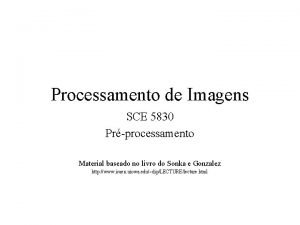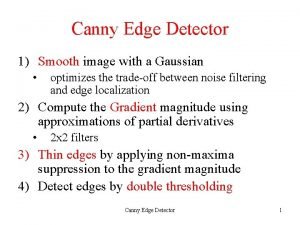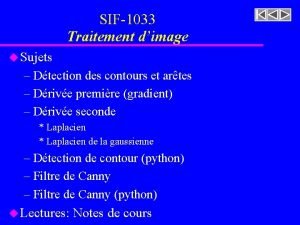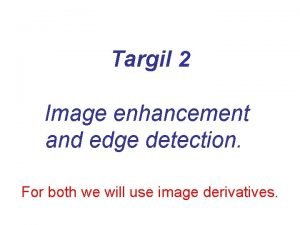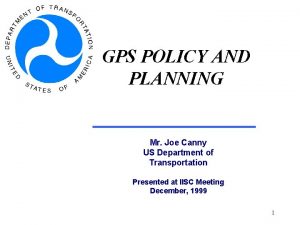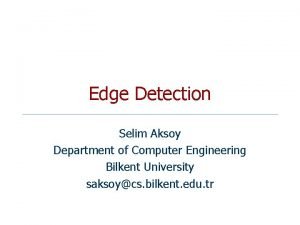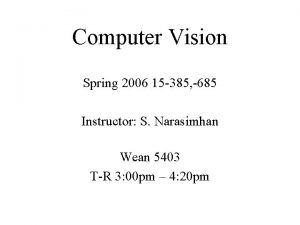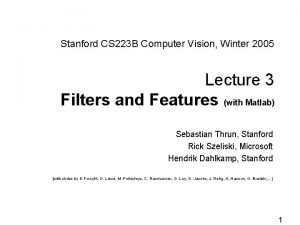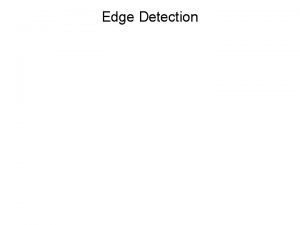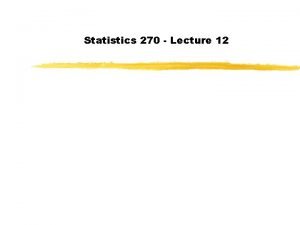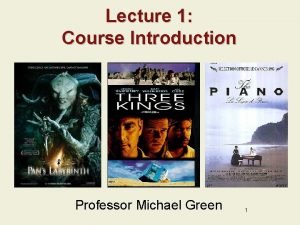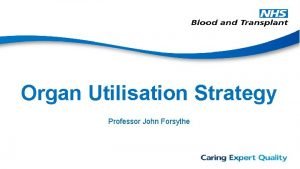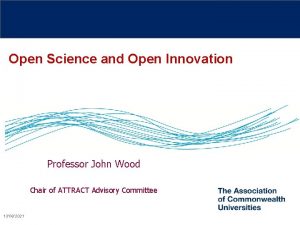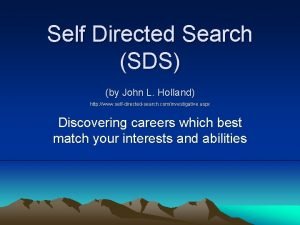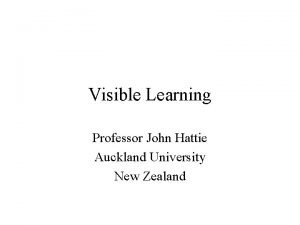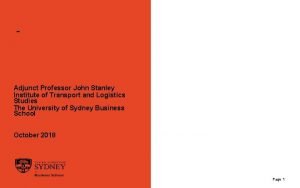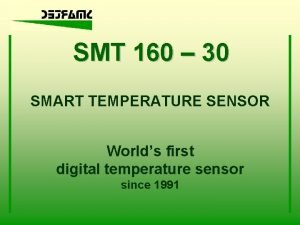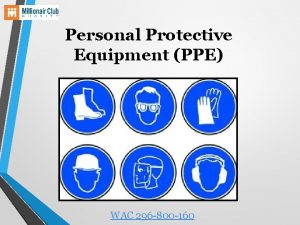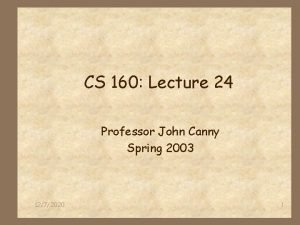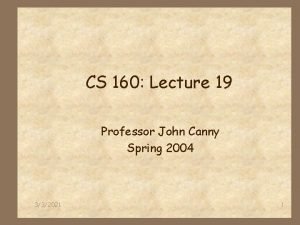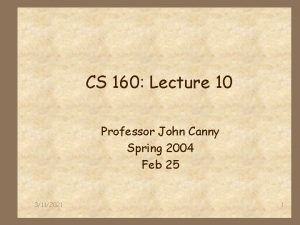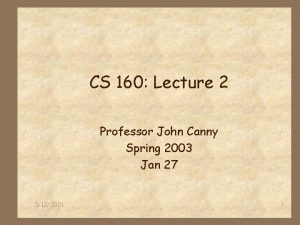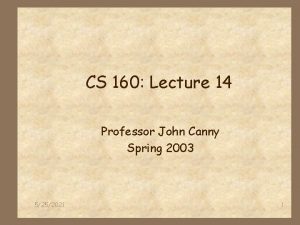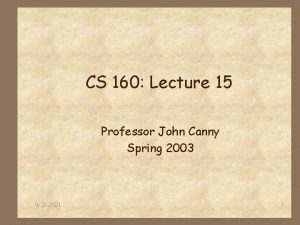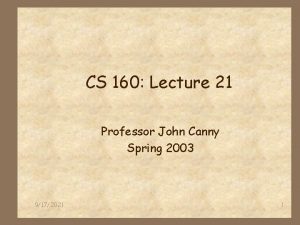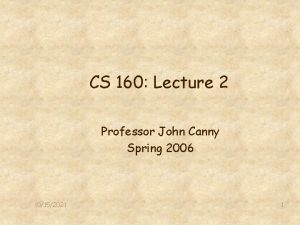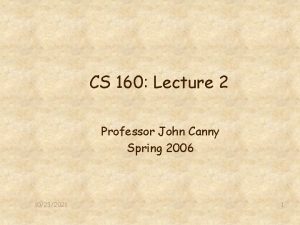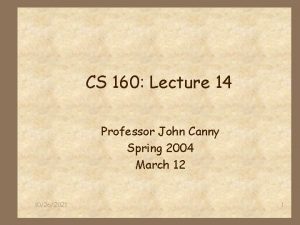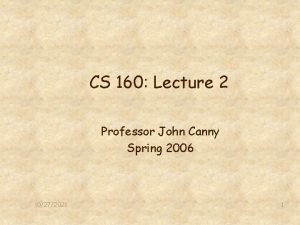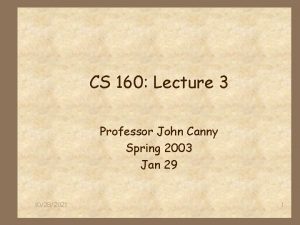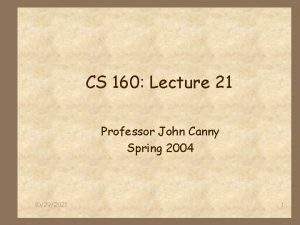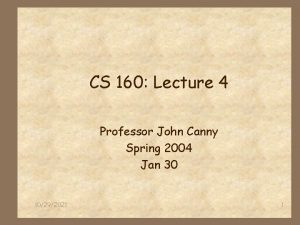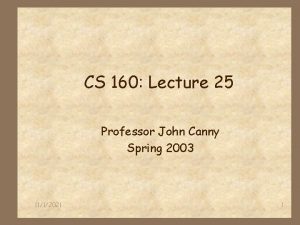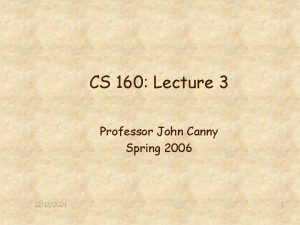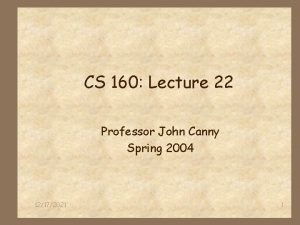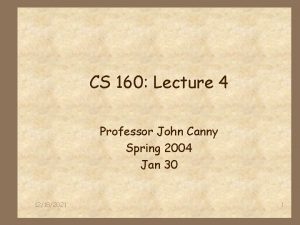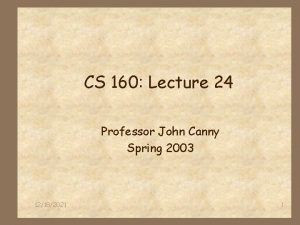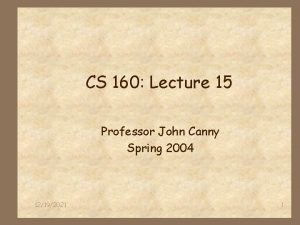CS 160 Lecture 23 Professor John Canny Spring

























- Slides: 25

CS 160: Lecture 23 Professor John Canny Spring 2003 10/30/2021 1

Preamble 4 Handout for next lecture. 4 Quiz on Help systems. 10/30/2021 2

Multimodal Interfaces 4 Multi-modal refers to interfaces that support non-GUI interaction. 4 Speech and pen input are two common examples - and are complementary. 10/30/2021 3

Speech+pen Interfaces 4 Speech is the preferred medium for subject, verb, object expression. 4 Writing or gesture provide locative information (pointing etc). 10/30/2021 4

Speech+pen Interfaces 4 Speech+pen for visual-spatial tasks (compared to speech only) * * 10% faster. 36% fewer task-critical errors. Shorter and simpler linguistic constructions. 90 -100% user preference to interact this way. 10/30/2021 5

Put-That-There 4 User points at object, and says “put that” (grab), then points to destination and says “there” (drop). * Very good for deictic actions, (speak and point), but these are only 20% of actions. For the rest, need complex gestures. 10/30/2021 6

Multimodal advantages 4 Advantages for error recovery: * Users intuitively pick the mode that is less error-prone. * Language is often simplified. * Users intuitively switch modes after an error, so the same problem is not repeated. 10/30/2021 7

Multimodal advantages 4 Other situations where mode choice helps: * Users with disability. * People with a strong accent or a cold. * People with RSI. * Young children or non-literate users. 10/30/2021 8

Multimodal advantages 4 For collaborative work, multimodal interfaces can communicate a lot more than text: * Speech contains prosodic information. * Gesture communicates emotion. * Writing has several expressive dimensions. 10/30/2021 9

Multimodal challenges 4 Using multimodal input generally requires advanced recognition methods: * For each mode. * For combining redundant information. * For combining non-redundant information: “open this file (pointing)” 4 Information is combined at two levels: * Feature level (early fusion). * Semantic level (late fusion). 10/30/2021 10

Early fusion Vision data Speech data Other sensor data Feature recognizer Fusion data Action recognizer 10/30/2021 11

Early fusion 4 Early fusion applies to combinations like speech+lip movement. It is difficult because: * Of the need for MM training data. * Because data need to be closely synchronized. * Computational and training costs. 10/30/2021 12

Late fusion Vision data Speech data Other sensor data Feature recognizer Action recognizer Fusion data Recognized Actions 10/30/2021 13

Late fusion 4 Late fusion is appropriate for combinations of complementary information, like pen+speech. * Recognizers are trained and used separately. * Unimodal recognizers are available off-the-shelf. * Its still important to accurately time-stamp all inputs: typical delays are known between e. g. gesture and speech. 10/30/2021 14

Contrast between MM and GUIs 4 GUI interfaces often restrict input to single non-overlapping events, while MM interfaces handle all inputs at once. 4 GUI events are unambiguous, MM inputs are based on recognition and require a probabilistic approach 4 MM interfaces are often distributed on a network. 10/30/2021 15

Agent architectures 4 Allow parts of an MM system to be written separately, in the most appropriate language, and integrated easily. 4 OAA: Open-Agent Architecture (Cohen et al) supports MM interfaces. 4 Blackboards and message queues are often used to simplify inter-agent communication. * Jini, Javaspaces, Tspaces, JXTA, JMS, MSMQ. . . 10/30/2021 16

Adminstrative 4 Final project presentations on May 12 and 13. 4 Presentations go by group number. Groups 7 - 12 on Monday 12, groups 1 -6 on Tuesday 13. 4 Final reports are due on Weds May 7. 10/30/2021 17

Symbolic/statistical approaches 4 Allow symbolic operations like unification (binding of terms like “this”) + probabilistic reasoning (possible interpretations of “this”). 4 The MTC system is an example * Members are recognizers. * Teams cluster data from recognizers. * The committee weights results from various teams. 10/30/2021 18

MTC architecture 10/30/2021 19

Probabilistic Toolkits 4 The “graphical models toolkit” U. Washington (Bilmes and Zweig). * Good for speech and time-series data. 4 MSBNx Bayes Net toolkit from Microsoft (Kadie et al. ) 4 UCLA MUSE: middleware for sensor fusion (also using Bayes nets). 10/30/2021 20

MM systems 4 Designers Outpost (Berkeley) 10/30/2021 21

MM systems: Quickset (OGI) 10/30/2021 22

Crossweaver (Berkeley) 10/30/2021 23

Crossweaver (Berkeley) 4 Crossweaver is a prototyping system for multi-modal (primarily pen and speech) UIs. 4 Also allows cross-platform development (for PDAs, Tablet-PCs, desktops. 10/30/2021 24

Summary 4 Multi-modal systems provide several advantages. 4 Speech and pointing are complementary. 4 Challenges for multi-modal. 4 Early vs. late fusion. 4 MM architectures, fusion approaches. 4 Examples of MM systems. 10/30/2021 25
 Imagem de uma rampa fonte max pixel
Imagem de uma rampa fonte max pixel What is canny edge detection in image processing
What is canny edge detection in image processing Traitement dimage
Traitement dimage Canny
Canny Joe canny
Joe canny Canny
Canny Canny
Canny Canny sebastian
Canny sebastian Canny mask
Canny mask Promotion from assistant to associate professor
Promotion from assistant to associate professor A college professor never finishes his lecture
A college professor never finishes his lecture What is this
What is this 01:640:244 lecture notes - lecture 15: plat, idah, farad
01:640:244 lecture notes - lecture 15: plat, idah, farad Giduk
Giduk Months that are in spring
Months that are in spring Professor john forsythe
Professor john forsythe Professor john forsythe
Professor john forsythe Professor john wood
Professor john wood Self-directed search
Self-directed search Professor john hattie
Professor john hattie Professor john hughes
Professor john hughes John stanley temple
John stanley temple 15 in 20 si kaçtır
15 in 20 si kaçtır Digital thermal sensor
Digital thermal sensor Dbhds incident reporting
Dbhds incident reporting Wac 296-800-160
Wac 296-800-160
